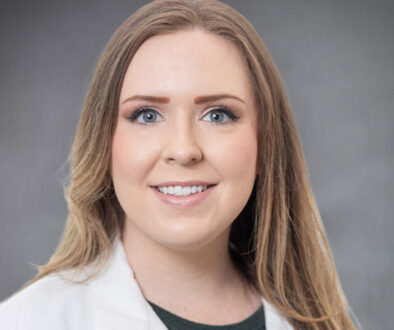The Complete Guide to Your Telemedicine Appointment
We have always been focused on the well-being of our patients and the health of the community. This is one reason why we’ve changed some of our office policies in response to the COVID-19 pandemic.
One of these transformations is the use of telemedicine to conduct virtual, or online, appointments with our patients. This technology provides the access you need in a way that is both convenient and safe.
Telemedicine is easy to use and provides the level of personal, professional care you can expect from Raleigh Capitol Ear, Nose and Throat.
At this time, in-office appointments are limited to urgent or emergent issues only, as recommended by the state and federal government, as well as the Academy of Otolaryngology-Head and Neck Surgery.
As a result, we are using telemedicine as much as possible during this difficult time. We hope to be able to resume normal services as soon as possible.
We’ll review a brief history of this technology, what it is, and how you can make the most out of your appointment.
What Is Telemedicine?
At one time, it was viewed as the technology that only existed in science fiction novels. Today, telemedicine has become an important part of the medical landscape. It helps patients around the world have easy access to physicians.
Telemedicine is the use of technology to create “virtual” visits with your physician.
Through telemedicine, you talk to your doctor through a video interface that is similar to video conferencing software. You will be able to discuss your symptoms, medication and any follow-up questions with your ear, nose and throat doctor in Raleigh.
We’re happy to offer this technology to our patients, particularly during the challenging time of the COVID-19 pandemic. We conduct these telehealth visits using the programs Facetime or Bluestream.
Scheduling a telemedicine visit is easy. Simply call any of our offices and schedule one just as you’d schedule a regular appointment.
Copays will likely apply for these visits.
Not sure how to use Facetime or Bluestream? Don’t worry. There are instructions on our website under the Patient Forms section.
For patients who have an iPhone, we are using Facetime.
For patients who do not have an iPhone, we are using Bluestream. This service could not be easier.
All you need is a smartphone or laptop/computer with audio and a camera. You will get either a text or email with a link to click that will immediately connect you with the doctor. No apps. No downloads. No need to create an account. No usernames or passwords.
As always, we’re happy to answer any questions you may have if you need assistance using these programs.
How to Make the Most Out of Your Telemedicine Appointment
Just as you would take time to prepare for an in-person appointment, it’s equally important to take time to get ready for your telemedicine appointment. We’ve got some useful tips for you to follow
Tips for a Successful Telemedicine Appointment
1. Use a well-lit area.
We want to be able to see you clearly. We suggest you use a room with good light or an abundance of natural light.
Be sure that the light isn’t behind you—if it is, this will create shadows. It is also helpful to have a small flashlight or penlight available. The doctor may need to see inside your mouth/throat during the visit.
2. Test your microphone and camera.
It’s also important to test your microphone before your visit to ensure that it’s working properly. There are several online sites that enable you to test it. You might even want to test it out by Facetiming a friend or relative to be sure everything is working correctly.
Likewise, test your camera. When you use it, be sure to set it at eye level. This makes it easier to make eye contact. As a result, it will make it easier to be engaged in the conversation.
3. Find a quiet room.
Even the slightest background noise can create a distraction and often make it difficult to hear you. Therefore, we suggest finding a quiet room such as a home office.
If you have children, see that someone can watch them while you’re having your appointment. Place your phone on vibrate so it won’t interrupt the session.
4. Speak clearly.
If you have a quality microphone, this shouldn’t be a problem. Most computers come with a microphone that should adequately suit your purposes, but it’s always a good idea to slow down and speak clearly.
5. Close any other programs you are using.
Close any other programs you happen to be using at the time. This is because some video programs can use a lot of bandwidth.
6. Be sure to plug in your computer or tablet—or make sure it’s fully charged.
The last thing you want is to have the battery run out in the middle of a consultation! It’s best to keep the device plugged in or make sure that its battery is fully charged.
7. Make a list of questions.
It always helps if you create a list of questions that you’d like to ask beforehand. This ensures you get the most out of your visit and it helps us provide the best treatment/ session possible.
8. Have a pen and paper ready.
You may want to write down some of the things the doctor is saying.
A Brief History of Telemedicine
In the late 1800s, visionaries imagined a time where doctors could make diagnoses remotely. Then the radio paved the way for doctors to give medical advice to naval clinics on ships in the 1920s.
Later, in Alaska, small, remote villages benefited from the use of telemedicine. Through this technology, specialists in Fairbanks, Anchorage or other cities can provide information in areas where specialists are hard to find, according to an article from the National Center for Biotechnology Education.
Of course, perhaps one of the giant leaps in telemedicine was due to NASA, where doctors were able to measure the vital signs of astronauts in the Mercury space program.
Gradually through the years, telemedicine has become more sophisticated. It’s now more accessible than ever. It has transformed into the system we know now.
How Does Telemedicine Help Americans?
Did you know that most community-based medical care is related to chronic diseases? There are roughly 100 million Americans who have some type of chronic disease. This amounts to 75 percent of all health care expenditures. In many cases, utilizing telemedicine for disease management has resulted in fewer hospitalizations. It has also reduced lengths of stay and costs.
Many patients report that they are very satisfied with the level of service they receive from telemedicine, and often follow their treatment plan better after a telemedicine visit.
Additional Benefits of Telemedicine
In addition to convenient access, telemedicine enables doctors to reach rural, underserved areas. It also provides a link for doctors and hospitals to connect with specialists and to consult with other physicians across the country.
It can also make it easier to schedule and follow-up with patients. Remote monitoring of health conditions is also made simpler through the marvel of telemedicine.
BECAUSE WE CARE FOR YOUR SAFETY: AN UPDATE ON OUR SERVICES
All of our allergy services are on hold; however, we are diligently working to create a safe, effective plan for our allergy patients. You can keep track of any changes by checking our website.
To be sure you get the latest information, please follow us on Facebook and Twitter. You can find the links below on our home page.
If you are experiencing symptoms or think you have or you may have been exposed to COVID-19, call 1-888-850-2684.
Finally, we want to be sure you have the most reliable information when it comes to the coronavirus. Don’t trust what you see on social media—a lot of well-meaning family and friends share information that may be flawed at best.
Following are the most reliable sources of information for you:
The Centers for Disease Control
The NC Department of Health and Human Services
The World Health Organization
We want you to know that we are continuing to be a partner in your care, and together, we will help ensure and safeguard your health.
If you’re interested in one of our telemedicine appointments, just contact us.




